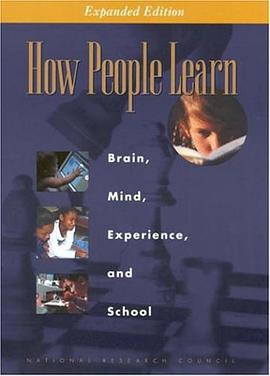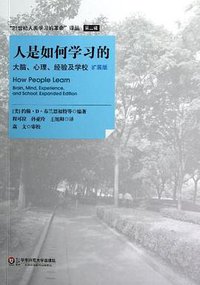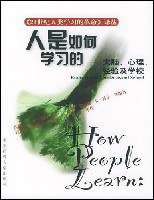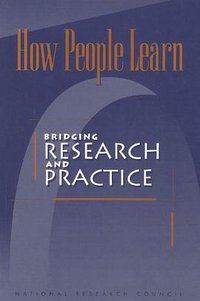How People Learn
豆瓣
Brain, Mind, Experience, and School: Expanded Edition
Committee on Developments in the Science of Learning with additional material from the Committee on Learning Research and Educational Practice / National Research Council
简介
This popular trade book, originally released in hardcover in the Spring of 1999, has been newly expanded to show how the theories and insights from the original book can translate into actions and practice, now making a real connection between classroom activities and learning behavior. This paperback edition includes far-reaching suggestions for research that could increase the impact that classroom teaching has on actual learning. Like the original hardcover edition, this book offers exciting new research about the mind and the brain that provides answers to a number of compelling questions. When do infants begin to learn? How do experts learn and how is this different from non-experts? What can teachers and schools do-with curricula, classroom settings, and teaching methods - to help children learn most effectively? New evidence from many branches of science has significantly added to our understanding of what it means to know, from the neural processes that occur during learning to the influence of culture on what people see and absorb. "How People Learn" examines these findings and their implications for what we teach, how we teach it, and how we assess what our children learn. The book uses exemplary teaching to illustrate how approaches based on what we now know result in in-depth learning. This new knowledge calls into question concepts and practices firmly entrenched in our current education system. The topics include: how learning actually changes the physical structure of the brain; how existing knowledge affects what people notice and how they learn; what the thought processes of experts tell us about how to teach; the amazing learning potential of infants; the relationship of classroom learning and everyday settings of community and workplace; learning needs and opportunities for teachers; and a realistic look at the role of technology in education.
contents
Part I Introduction
1 Learning: From Speculation to Science 3
Part II Learners and Learning
2 How Experts Differ from Novices 31
3 Learning and Transfer 51
4 How Children Learn 79
5 Mind and Brain 114
Part III Teachers and Teaching
6 The Design of Learning Environments 131
7 Effective Teaching: Examples in History, Mathematics, and Science 155
8 Teacher Learning 190
9 Technology to Support Learning 206
Part IV Future Directions for the Science of Learning
10 Conclusions 233
11 Next Steps for Research 248
References 285
Biographical Sketches of Committees' Members and Staff 349
Acknowledgments 358
Index 363


